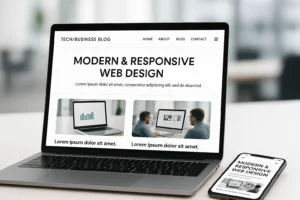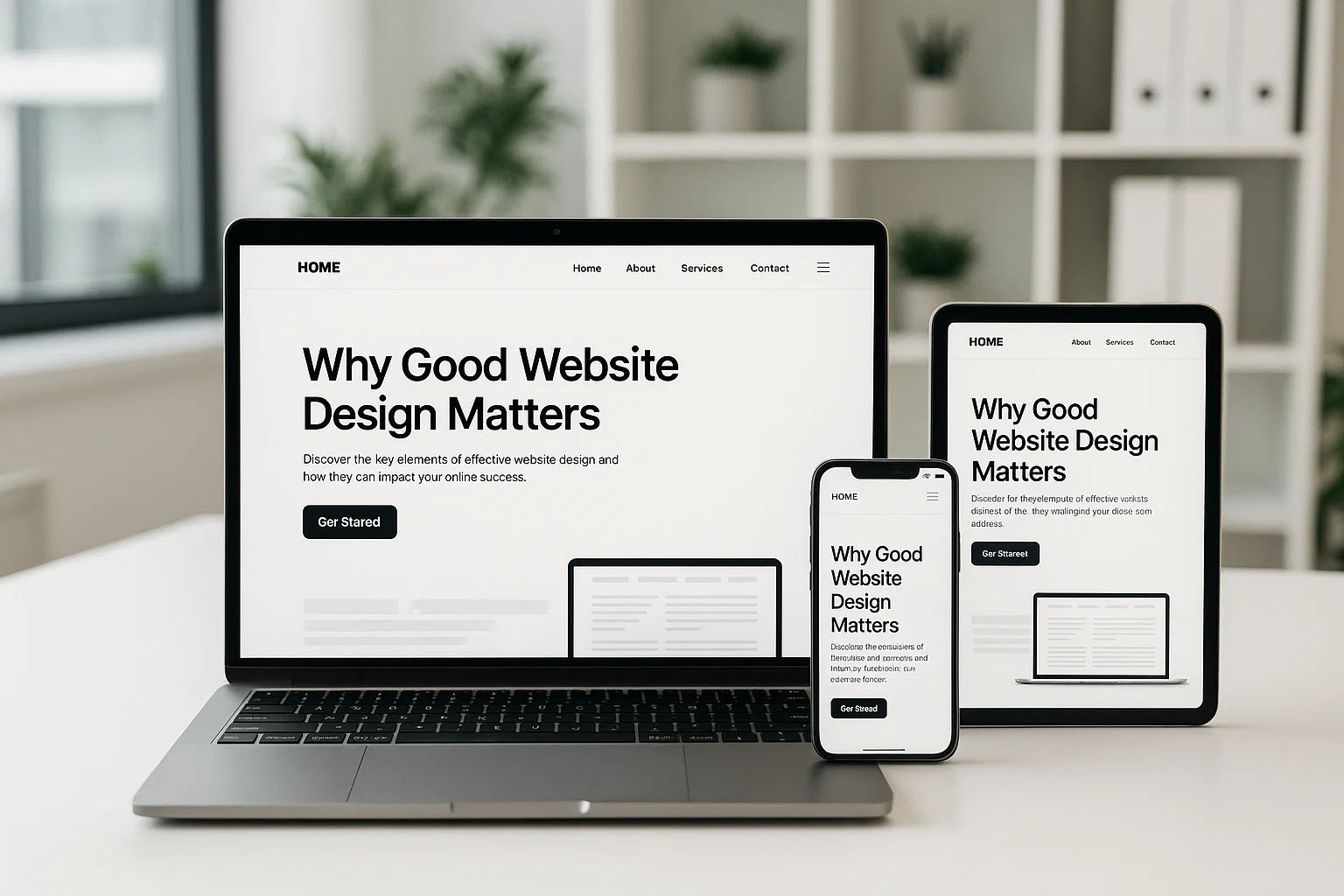“Your website is the window to your business. Keep it fresh, keep it exciting.” – Jay Conrad Levinson
Did you know that 75% of people judge a company’s credibility based on website design? That’s a huge number. It means before your pricing, before your content, before your product features, design is what sets the first impression. I’ve observed countless businesses investing heavily in marketing campaigns, yet losing potential customers because their website feels outdated or confusing.
The importance of website design goes beyond aesthetics. It influences trust, engagement, SEO, brand perception, and even conversions. Let’s explore why good web design matters and how it can transform a visitor into a loyal customer.

First Impressions Build Trust
Your homepage is often the first thing a visitor sees. Within seconds, they judge if your business is professional and reliable. A clean layout, balanced visuals, and intuitive navigation create confidence.
I remember a client in the healthcare sector. Their old website had outdated images and cluttered menus. After redesigning it with modern visuals and clear navigation, their bounce rate dropped by 40%. Visitors stayed longer, engaged with content, and conversions increased.
Key takeaway: The first impression isn’t just visual-it’s emotional. Good design signals credibility.

How User Experience Shapes Engagement
A website isn’t just about looking good-it’s about how it works. User experience (UX) determines if people stay, explore, and take action.
Elements of a great UX include:
- Simple navigation: Users shouldn’t guess where to click next.
- Responsive design: Mobile, tablet, and desktop should feel seamless.
- Readability: Fonts, colors, and spacing should make content easy to consume.
- Fast loading times: A slow site frustrates visitors and increases bounce rates.
I’ve seen clients with excellent products fail to engage visitors simply because navigation was confusing. A redesign focused on UX increased session duration by over 50%.
So when someone asks, “Why is web design important?” UX is a huge part of the answer.
Design’s Role in SEO Performance
Many think SEO is only about keywords. In reality, Google observes user behavior. High bounce rates, slow pages, or poor mobile experiences can reduce rankings.
Design affects SEO through:
- Page speed: Clean designs load faster.
- Mobile-friendliness: Most searches now happen on smartphones.
- Content structure: Proper headings, spacing, and visuals improve readability.
- Internal linking: Clear paths help search engines crawl effectively.
A good design keeps users happy and search engines happier. That’s why the importance of website design extends to organic traffic and visibility.
Visual Appeal and Emotional Impact
We are wired to respond to visuals. Adobe reports that 38% of users stop engaging if the layout is unattractive. Color schemes, imagery, and typography evoke emotions that influence decisions.
Consider an e-commerce site. A visually appealing product page with high-quality images encourages buyers to click “Add to Cart.” Conversely, poor visuals can make a great product seem cheap or unreliable.
I’ve observed brands tailoring visuals to audience expectations and see higher engagement rates. Even subtle changes like consistent fonts and complementary colors can improve trust and satisfaction.

Reflecting Your Brand Through Design
Your website is your digital storefront. It should reflect your brand identity consistently across every page.
Ask yourself:
- Does my website align with our brand values?
- Do visuals, fonts, and colors match our offline and social media branding?
- Does the tone of the content match our audience’s expectations?
Consistency creates familiarity. Visitors instantly recognize your brand, which strengthens loyalty. That’s why good web design matters, it’s not just about visuals-it’s about brand communication.
Clear Design Drives Conversions
Ultimately, a website aims to get users to take action. Whether it’s signing up, making a purchase, or contacting you, design can make the path clear.
Key conversion-focused design elements:
- Visible call-to-action buttons: Use contrasting colors to attract attention.
- Logical flow: Guide users step-by-step without confusion.
- Minimal distractions: Focus on key actions, not clutter.
I worked with a client whose signup rate doubled after redesigning CTA buttons, simplifying forms, and decluttering product pages. Good design directly impacts ROI.
Staying Ahead of Competitors
Your competitors are online. If their websites are modern, fast, and user-friendly while yours feels outdated, you risk losing visitors.
I’ve seen small businesses lose leads to competitors with superior website design, even when the product quality was similar. In today’s digital-first world, design isn’t optional’s essential to stay competitive.
Future-Proofing Your Website
Design trends evolve rapidly. What looks modern today may feel outdated in a few years. Updating your website keeps it relevant and demonstrates adaptability.
In my experience, businesses that regularly refresh their websites experience:
- Increased user engagement
- Better conversion rates
- Higher trust and credibility
- Reduced bounce rates
Future-proofing isn’t just about style-it’s about technology, devices, and user expectations.
Final Thoughts
A website isn’t just a digital placeholder-it’s a reflection of your business. From first impressions to user experience, SEO, brand perception, and conversions, design influences every stage of interaction.
In simple terms, why good web design matters is that it turns visitors into loyal customers.
Steve Jobs said it best: “Design is not just what it looks like and feels like. Design is how it works.”
Your website should not only look appealing-it should function seamlessly, guide visitors, and help your business grow.
